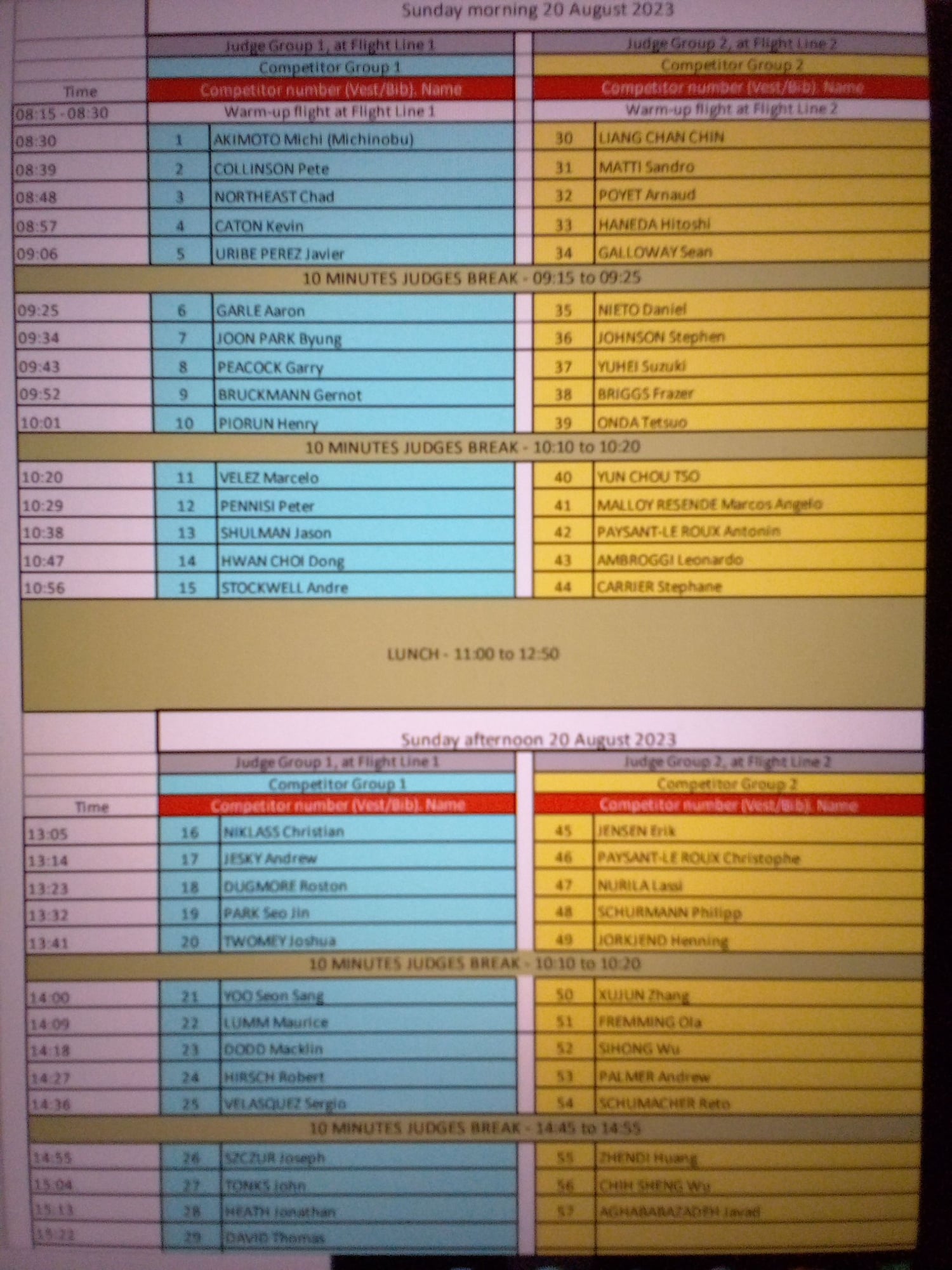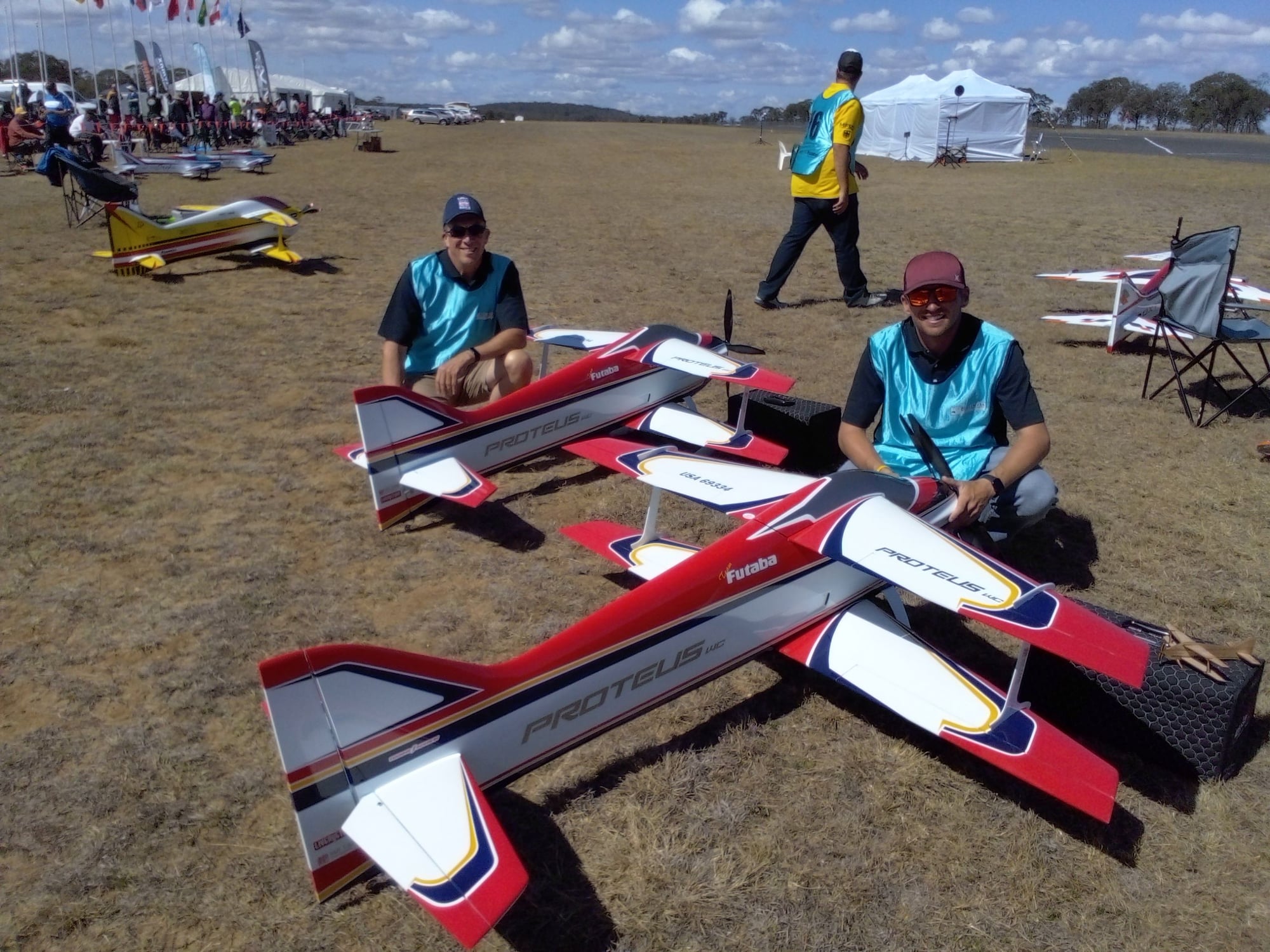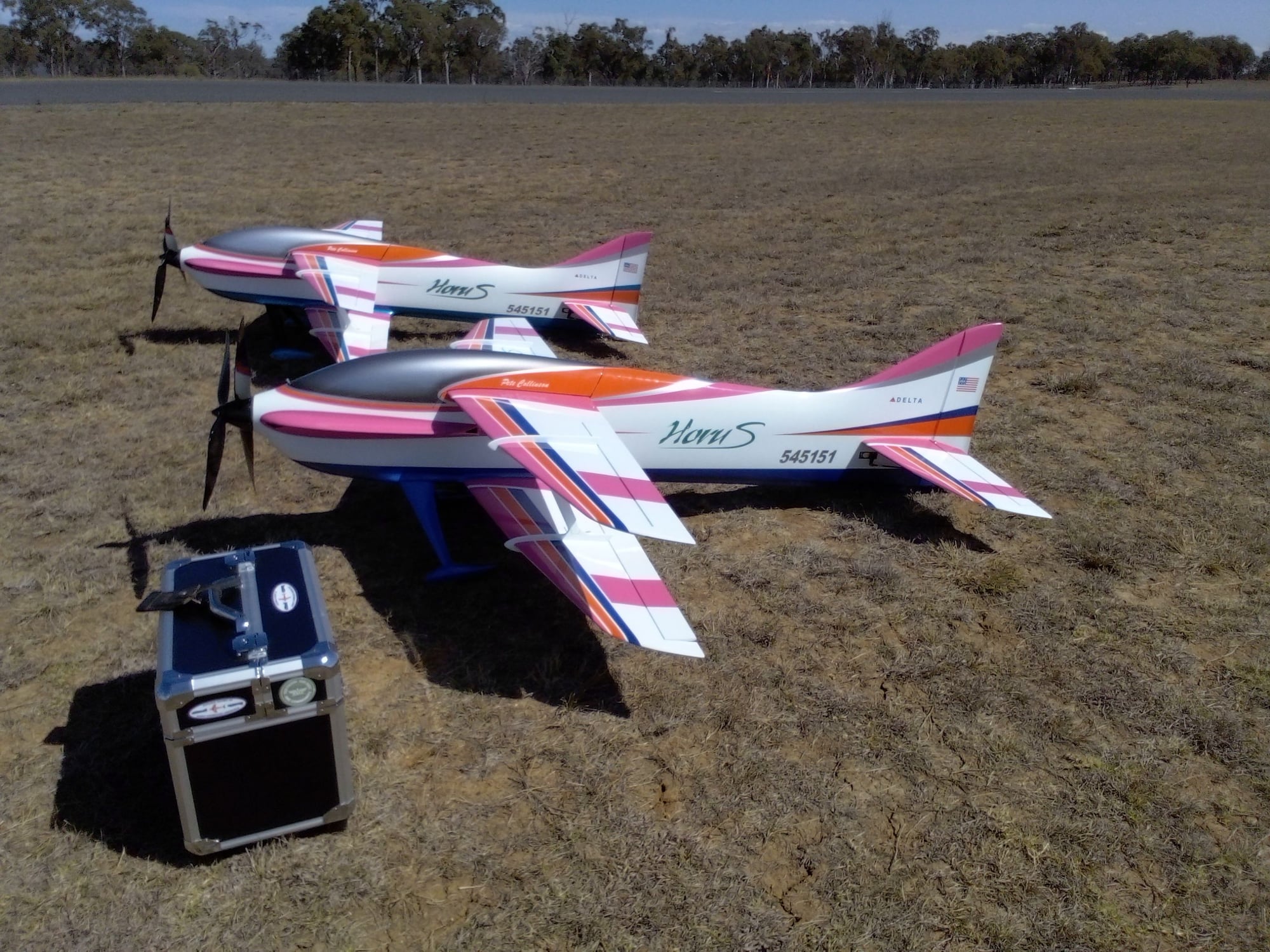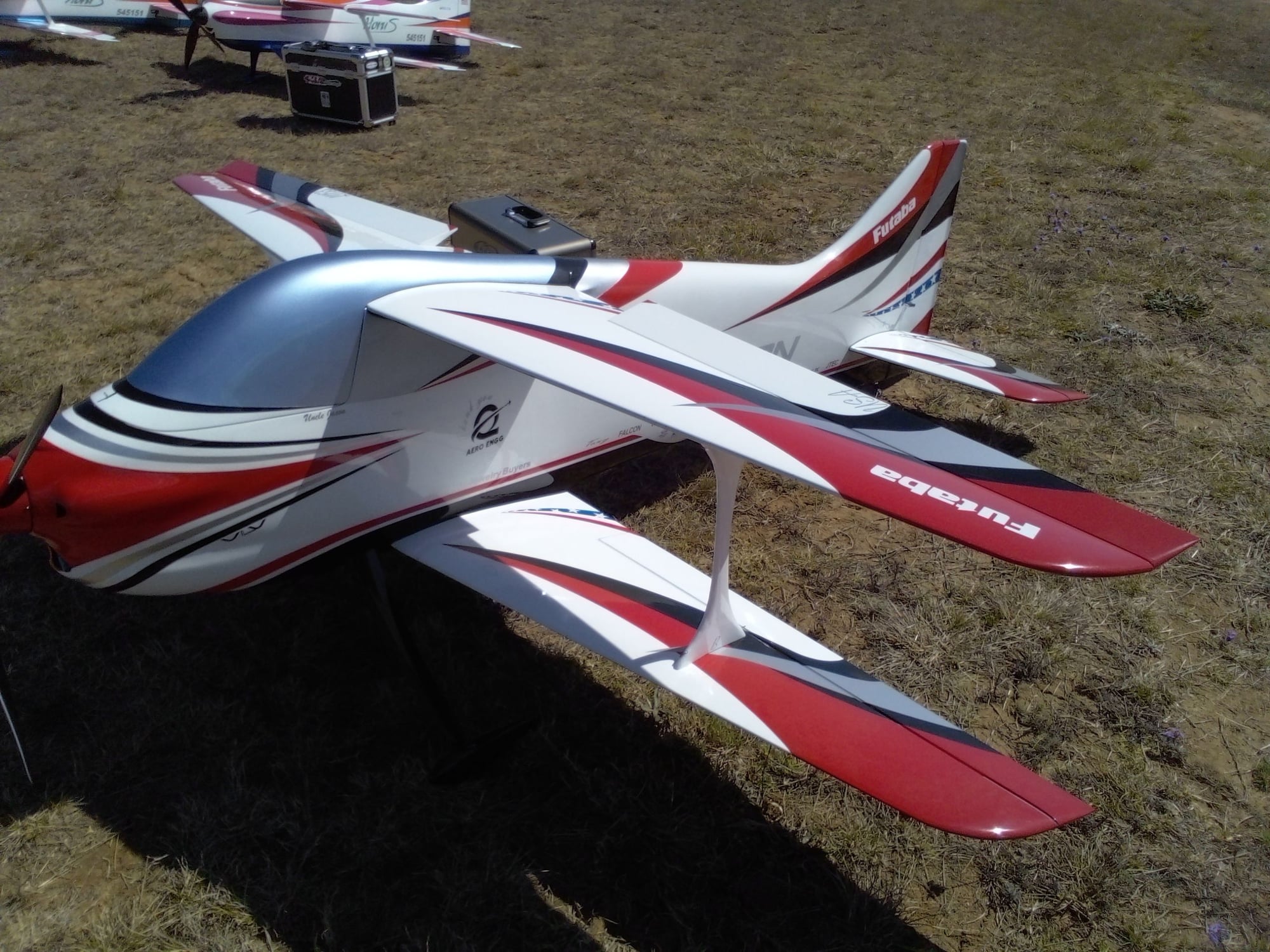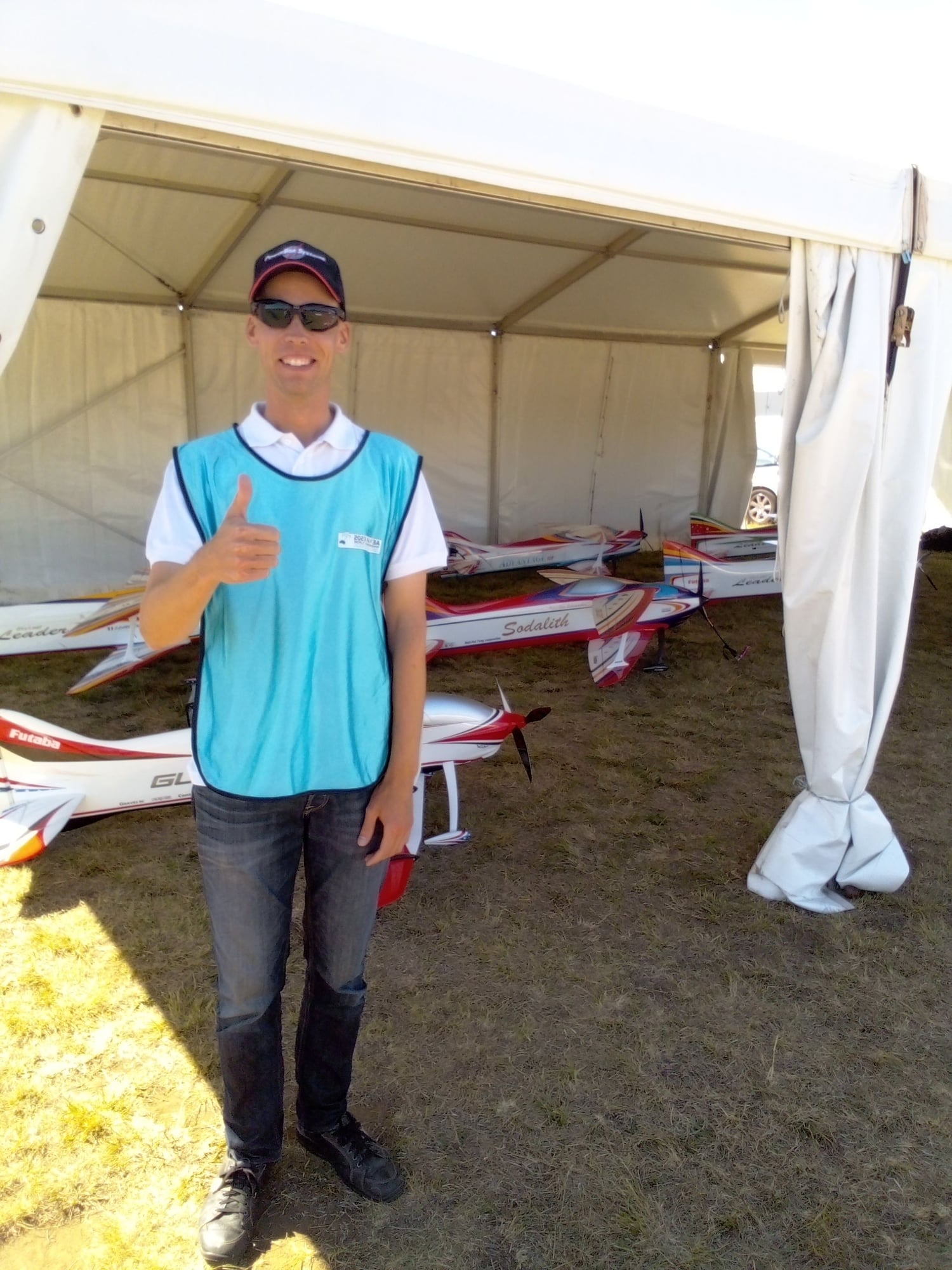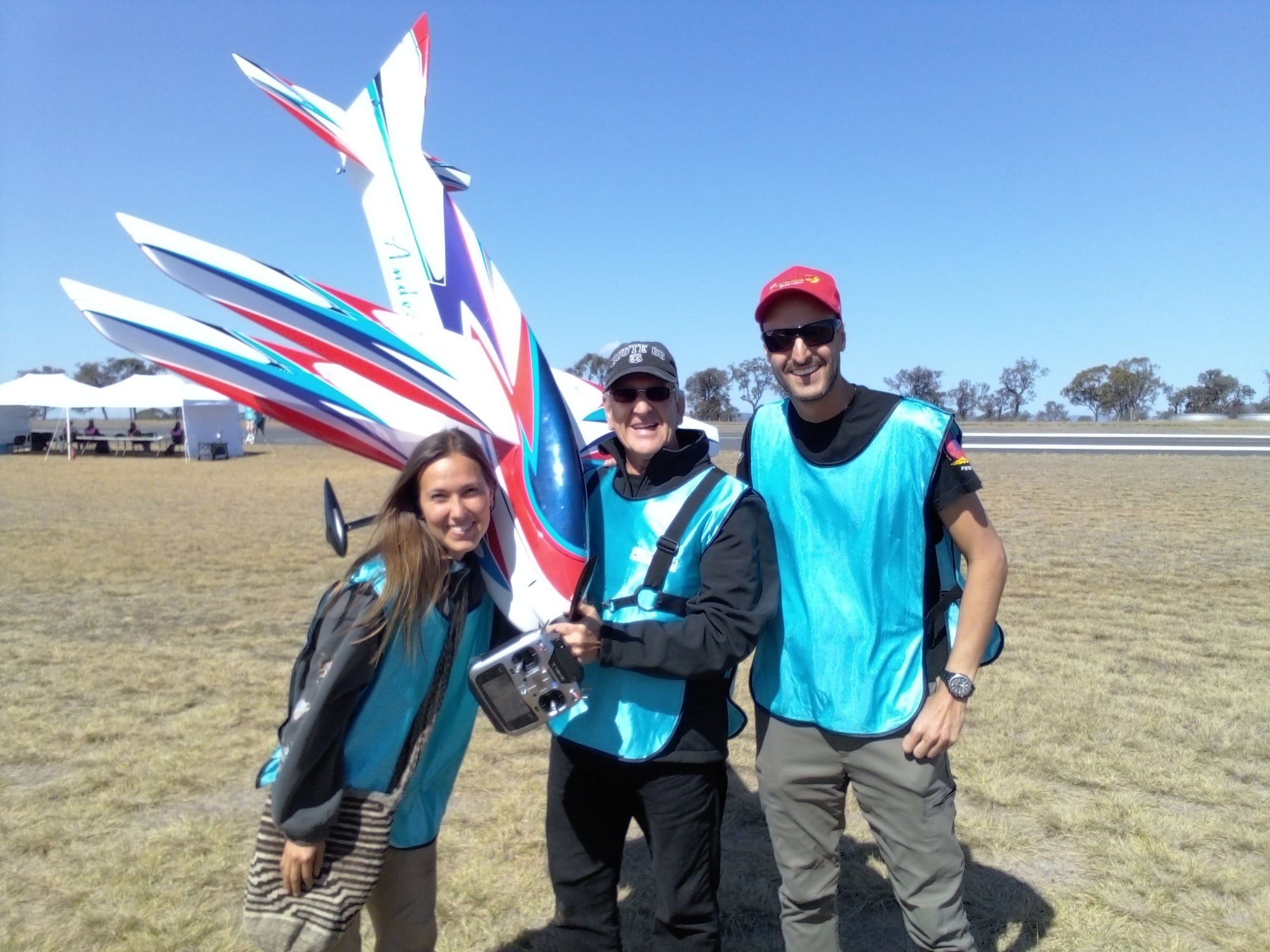2023 World Championships Australia
#1
Great time: Here is picture 1! This was taken with a group of us that get a quick look at a Vampire project. This is the plug that will make the mold which will be for making components of the mode. Very impressive project this will be when completed. Gernot was able to provide some insights on building techniques needed to keep the structure light and durable as it progresses to that stage...
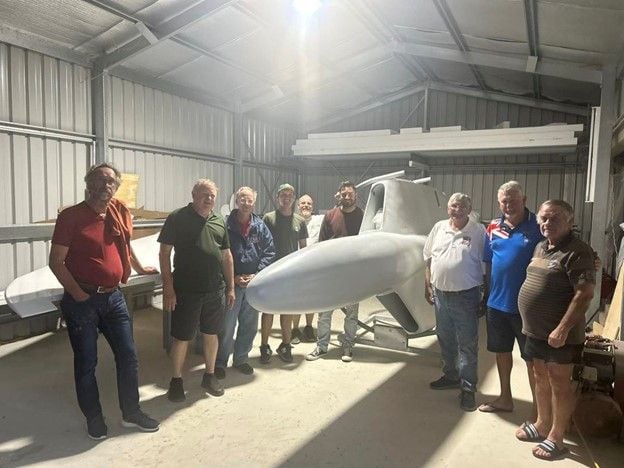

#2
Welcome to the Worlds! The layout of the field was very well thought through with two flying area separated with convenient parking and spectator areas. This gave excellent visibility and access to pilots while maintaining safety zone for the full-scale runway, judging and convenient processing areas. In this picture, Christophe and his son are practicing for the final unknown flight.

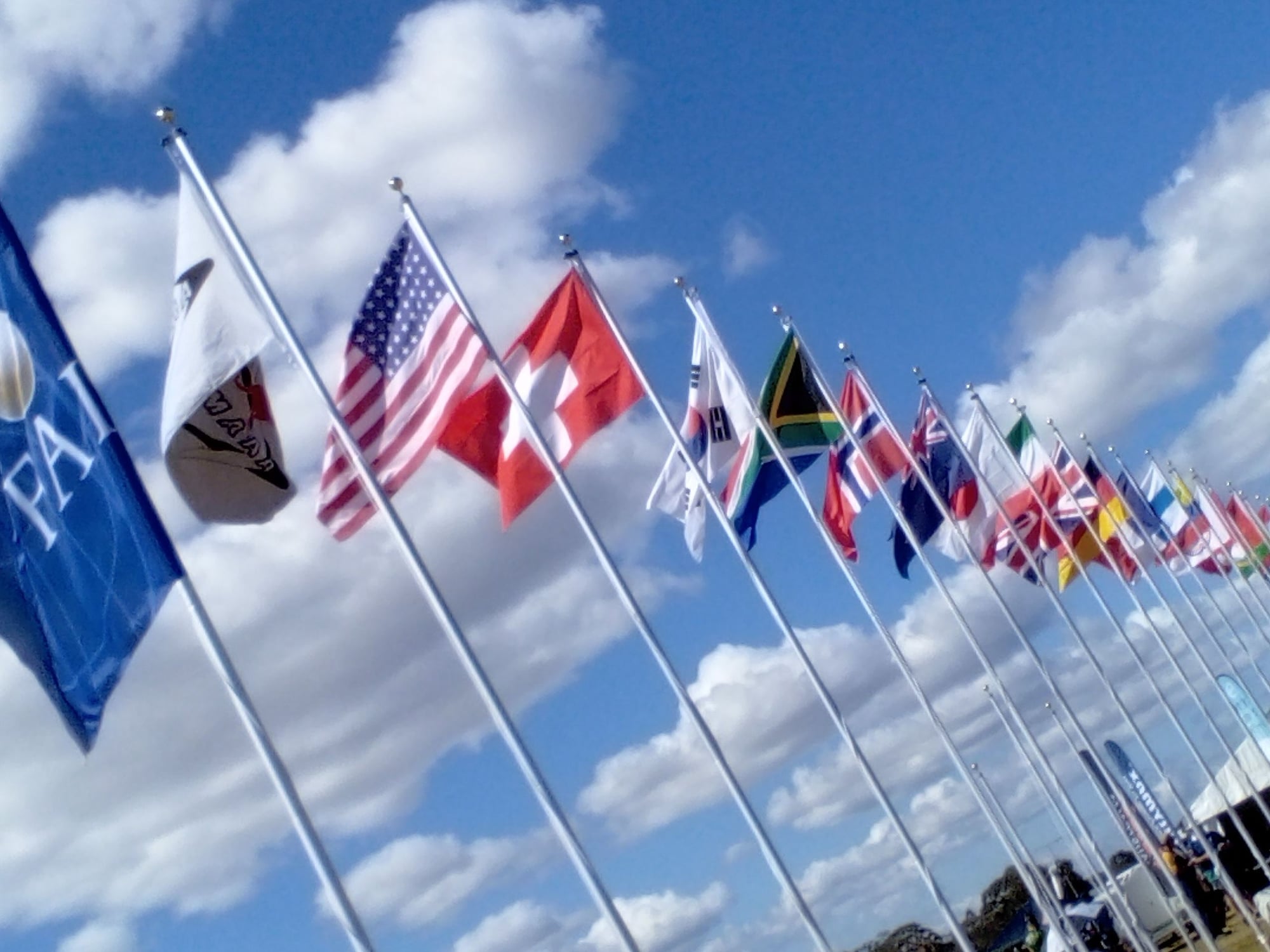




#5
Climate- reminds me of Vegas or Tucson in the fall- cool temperatures at night, mild days, low humidity.
International dateline and adjusting to flying the day before yesterday tomorrow. … at least it felt that way for the first 4 days we were practicing. Dinner for breakfast, breakfast at midnight, etc. etc. etc. with a mile headache for the first week of adapting. I have no idea how many hours we traveled, but we left on Friday morning and arrived on Sunday night. Saturday, as a date, never existed. It was removed from existence the moment we passed the international date line. The overall trip was not as bad as I imagined. The longest leg of the trip was a 15 hour flight from LA to Sydney. It really did not sink in until the pilot made an announcement over the intercom that we would be traveling exactly half the circumference of the globe on that flight. Well, it was certainly better than driving or sailing that distance!
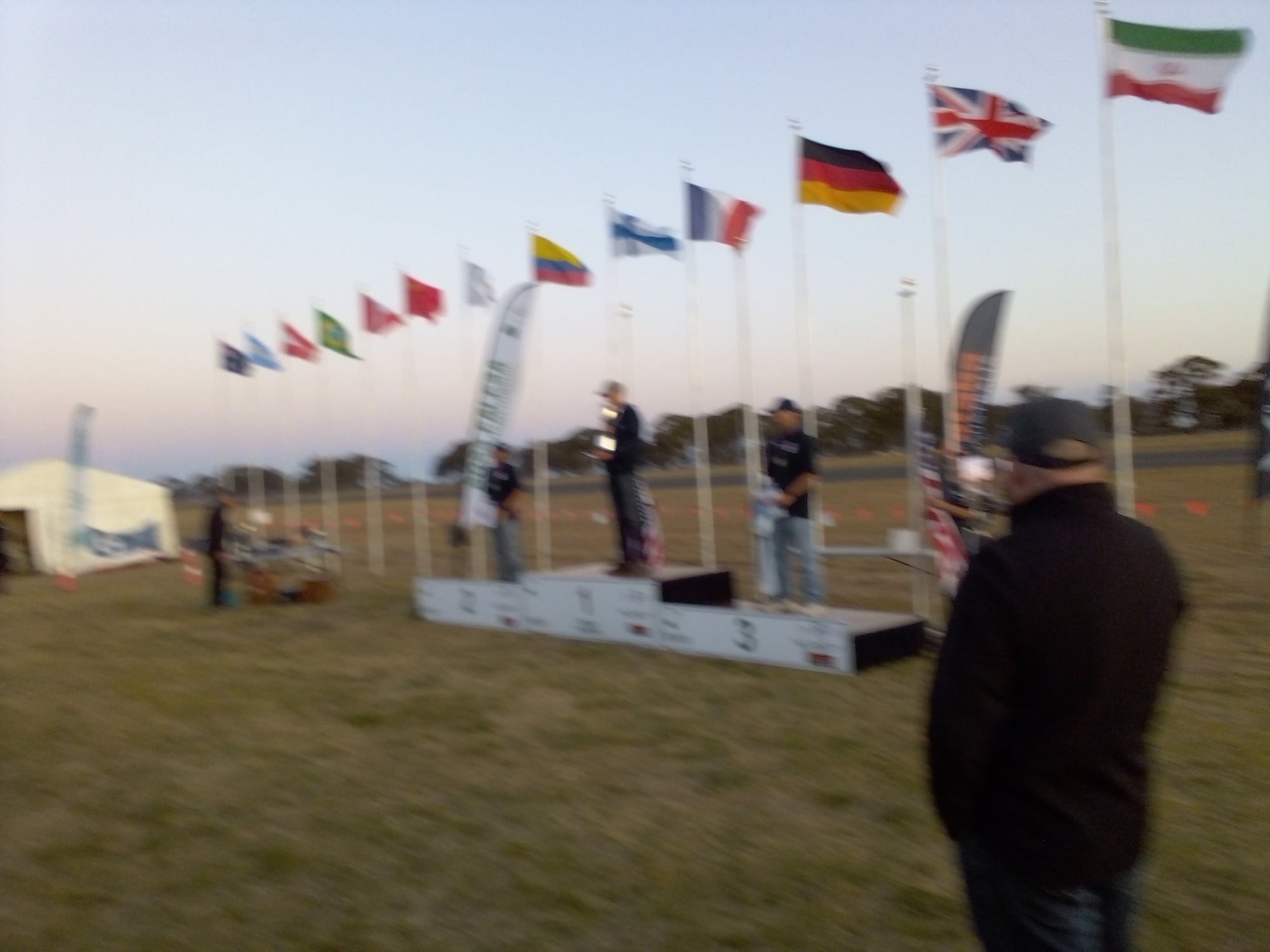
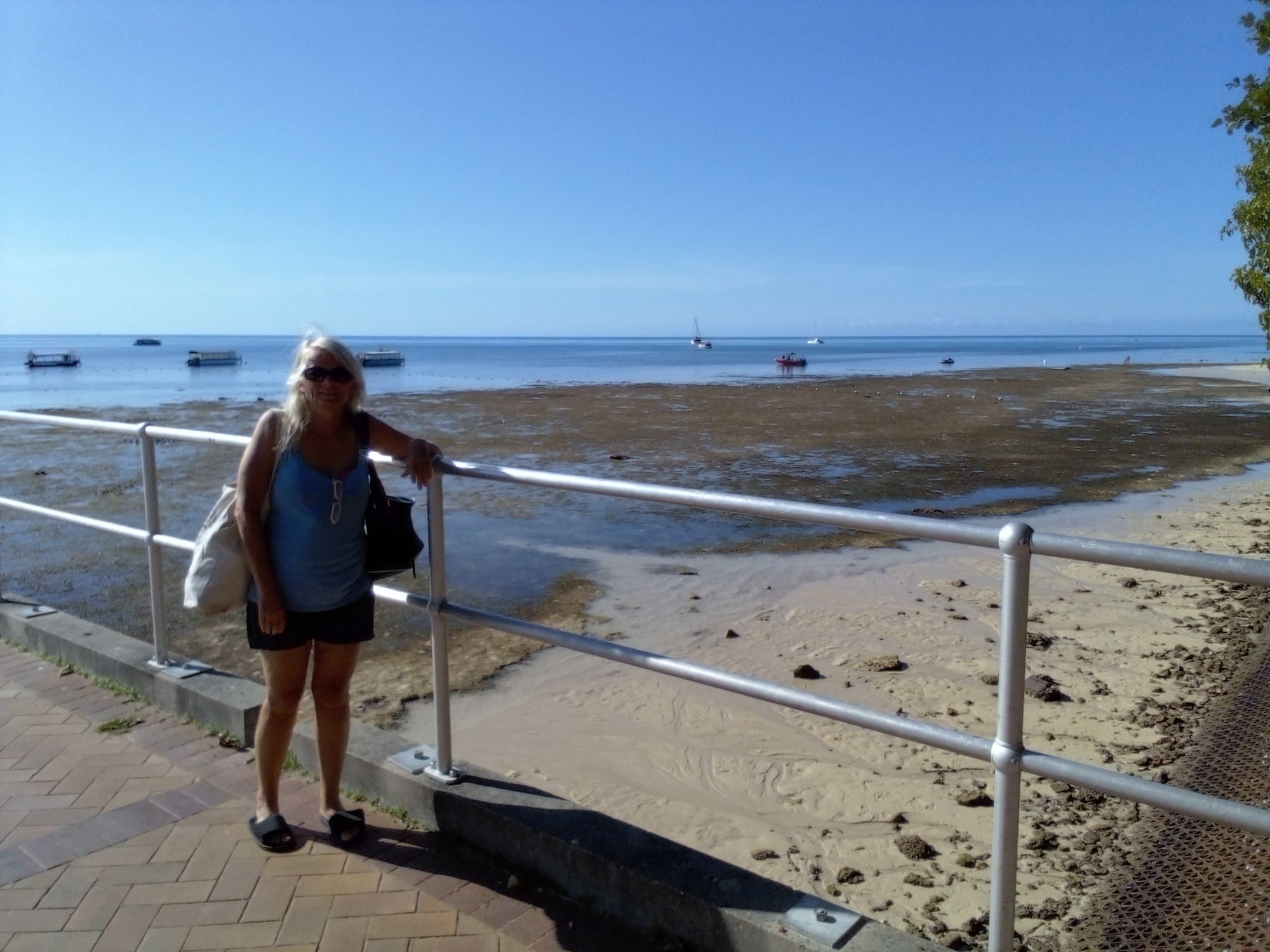
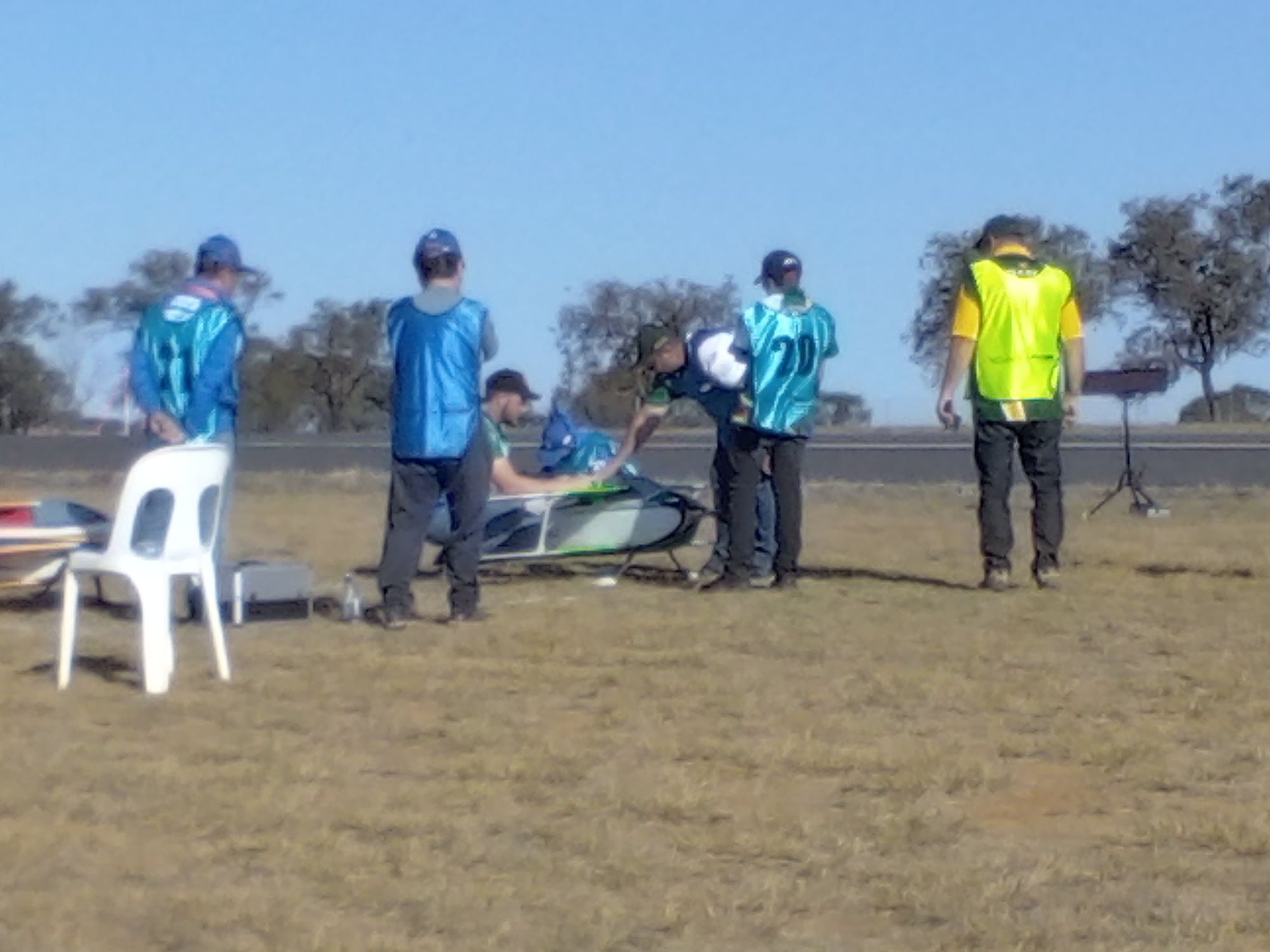
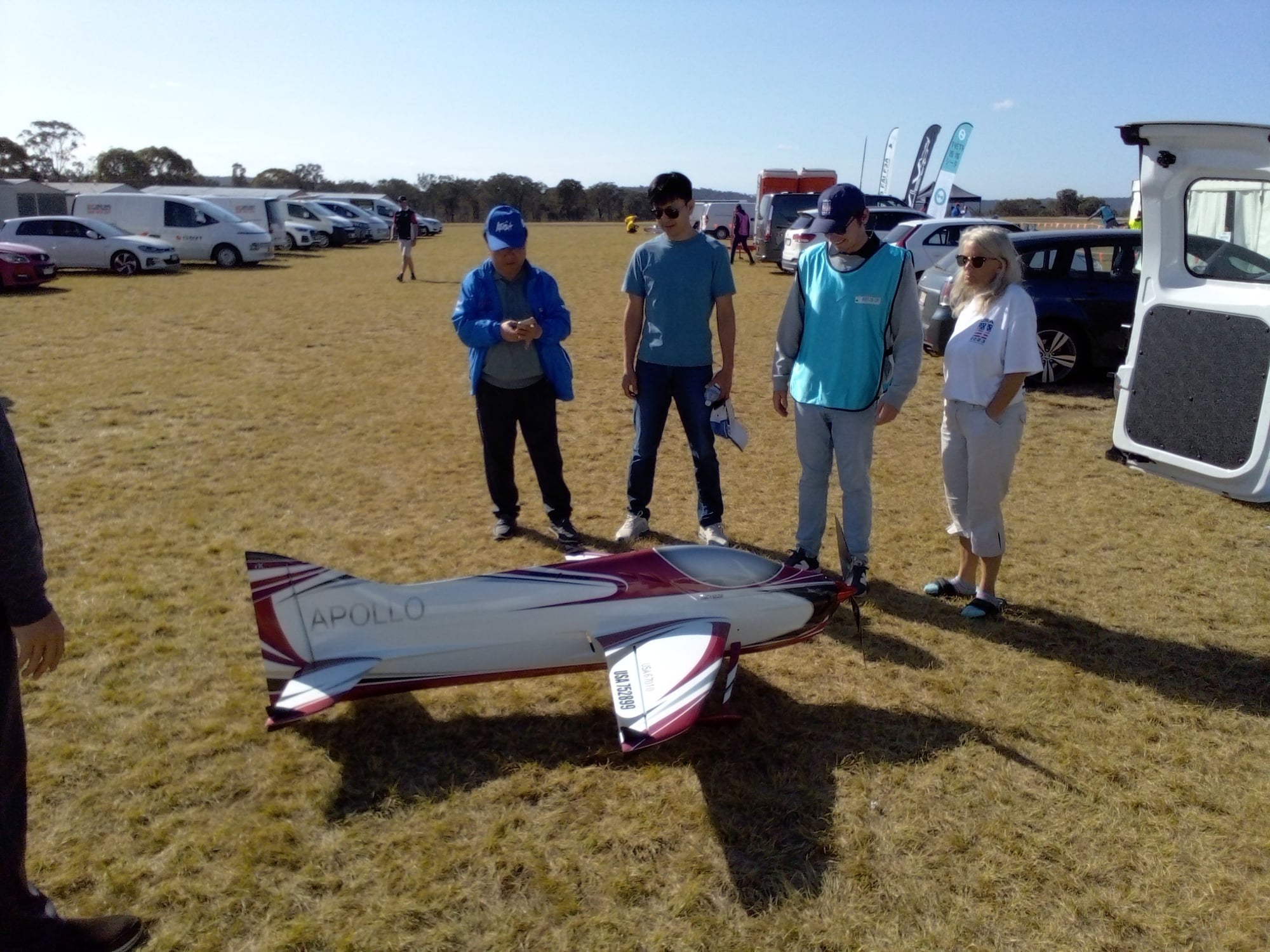
International dateline and adjusting to flying the day before yesterday tomorrow. … at least it felt that way for the first 4 days we were practicing. Dinner for breakfast, breakfast at midnight, etc. etc. etc. with a mile headache for the first week of adapting. I have no idea how many hours we traveled, but we left on Friday morning and arrived on Sunday night. Saturday, as a date, never existed. It was removed from existence the moment we passed the international date line. The overall trip was not as bad as I imagined. The longest leg of the trip was a 15 hour flight from LA to Sydney. It really did not sink in until the pilot made an announcement over the intercom that we would be traveling exactly half the circumference of the globe on that flight. Well, it was certainly better than driving or sailing that distance!




#6
People are really nice. In terms of hospitality, the Australians hospitality is amazing. Aaron accommodated many pilots by actually building a large shelter at a practice site where the Americans (with the exception of Peter Collinson who flew at a separate site) shared with the Australians, Canadians, Austrians (Gernot and his father) and New Zealand teams. This site in Inglewood, Australia is a full-scale airstrip and the home of an annual giant scale RC fly-in. The most recent fly-in event that took place several months prior had over 150 pilots. There is a great relationship with the local government to be able to access the airstrip for modeling activities. The facility can run two flight lines simultaneously with adequate overfly at both lines. Dave (Aaron’s dad) took me for a tour of the entire airstrip and shared with me that the goal is to have a very large event at this location with similar format to the “Joe Nall” in the U.S.
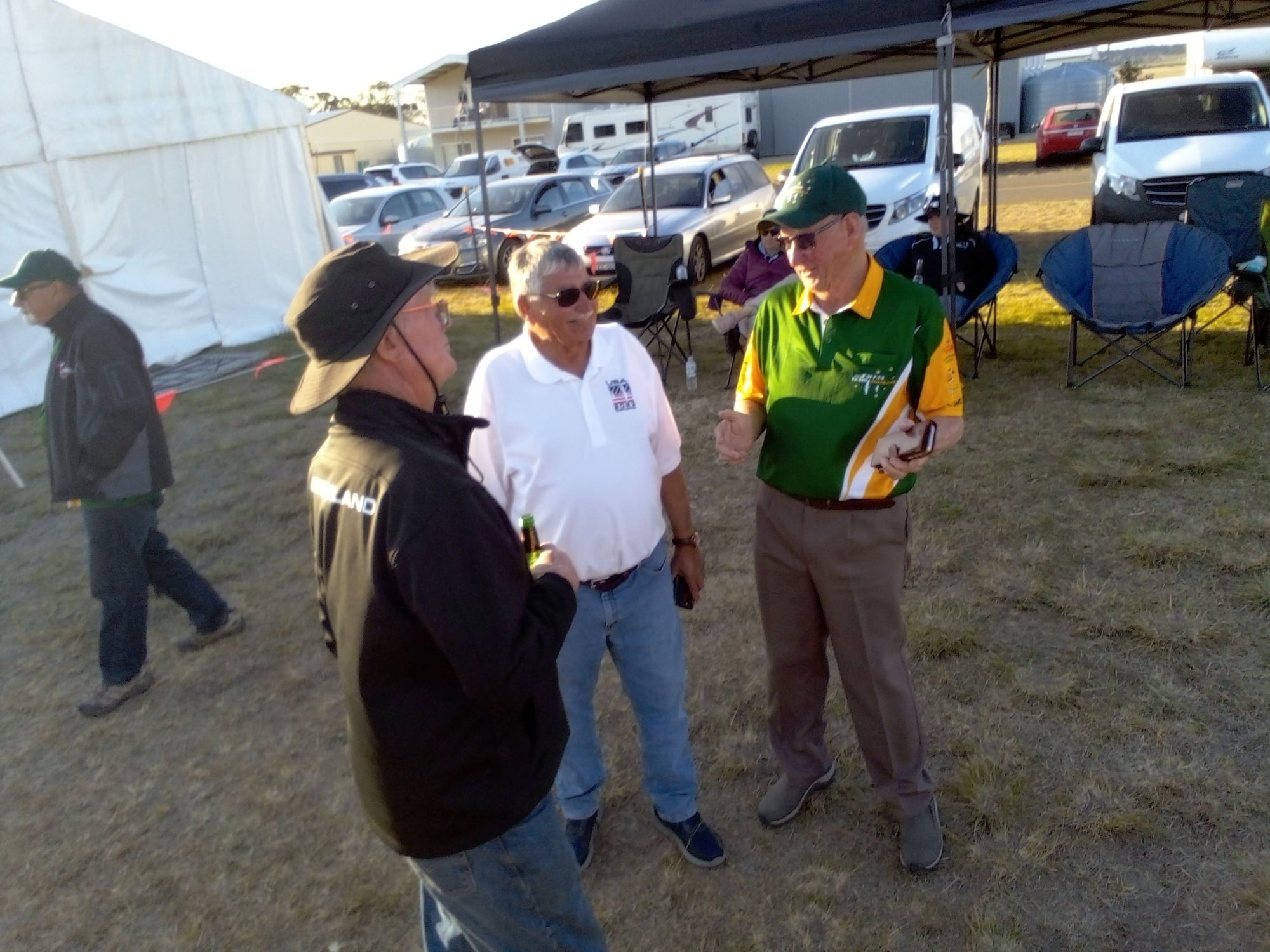

#7
Tim Jesky is the proud dad of Andrew Jesky, who finished 2nd overall and led the U.S. Team for the world championships team trophy. There were many stories but here is one. During the week Andrew was helping Sergio with his plane and coaching him. During the second day of competition at the practice field Sergio accidentally took off without connecting his ailerons. Joseph and I were setting up Joseph's Apollo and getting it ready to fly, so we did not realize immediately what happened until we saw all the pilots on the flight line grabbing their planes and heading for the shelters. I looked up to see Andrew calmly giving Sergio instructions "down elevator, right rudder, up elevator" as the plane slowly rolled around and climbed enough for him to unhook the Tx to give it to Andrew. Now I've seen several pilots land without ailerons and there are several techniques to do this such as snap rolling the plane partially to shift the wing position while flying. No, Andrew did a super slow rolling circle. The first one was around the center box and I thought- this is going to get really interesting. The second one he did was just over the trees and again about center box. The third one, from my reconning would put the plane into the ground inverted. So what does Andrew do? the plan was rolling so slowly until it was just totally inverted on the left end of the runway- and I mean like 5 feet off the ground. I thought, land inverted? No not Andrew, he basically did a super slow roll basically with the plane about 10 feet high or less, straight down the center line of the runway and then just as it leveled, cut the throttle and landed nearly perfectly. I don't know if anyone videotaped this, but it was the most impressive not to say awesome save I have ever witnessed. I don't think very many pilots could roll that smooth and slow and axial, then precisely land even if they had full control with ailerons! I mean when I spoke to Sergio afterward he said, "Andew did not just save the airplane, he saved my life". So this is where Tim comes back into the picture. At dinner later in the week, one of the Australian coaches expressed how proud he must be to have a son that does these kinds of acts. Tim was very humble, gracious, barely acknowledged the magnitude of this act. It showed his true character. That is really what this hobby is all about!
#9
The flight order was wisely arranged by the contest management. This is evidenced by observing how each pilot was closely matched in timing in order to preserve equal competition flying conditions for the top pilots. You can observe that Andrew Jesky and Christophe were aligned flying on line A and B scheduled for the same time (and weather conditions). The preliminaries consisted of one flight per day, starting Sunday through Wednesday. The teams were kept on the same flight line which really helped with logistics in keeping the team members together during the preliminaries. All US Pilots (Andrew, Jason, Peter and Joseph) made it to the semi-finals which took place on Friday (Thursday was a day of practice/weather day).
